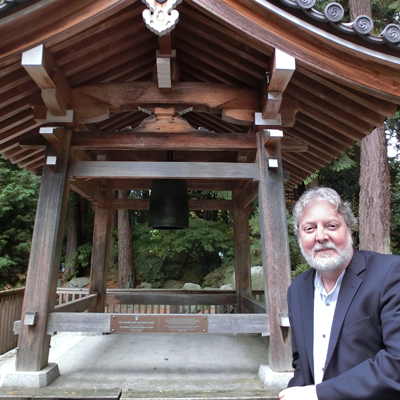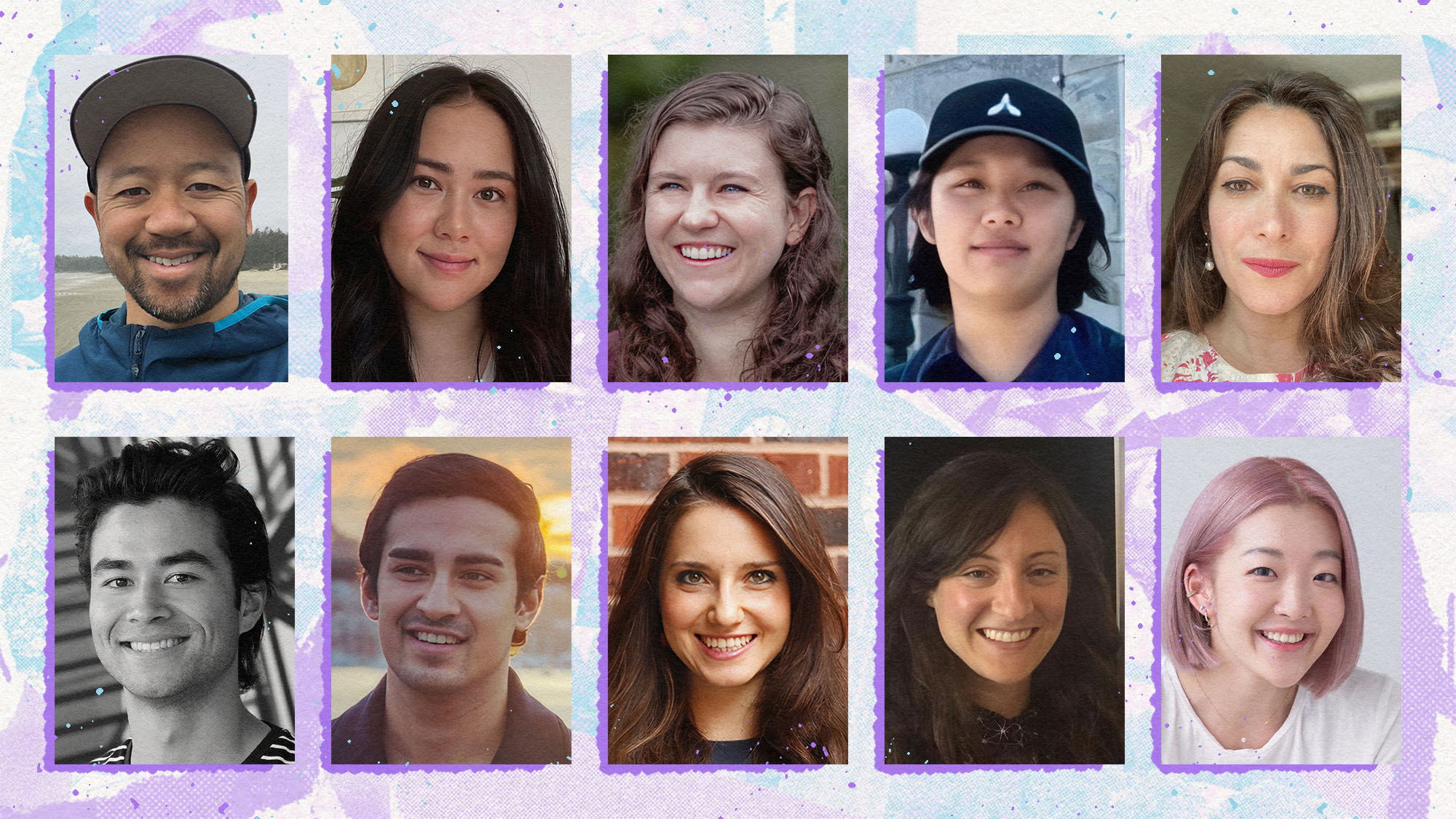Associate Head and Professor of the Department of Asian Studies, Dr. Joshua Mostow recently added a new honour to his list of accomplishments: Fellow of the Royal Society of Canada. The Faculty of Arts spoke with Dr. Mostow about how he chose his field, the convergence of classical and contemporary Japanese art, and the most exciting discovery of his career.
Congratulations on being elected a Fellow of the Royal Society of Canada. What first inspired you to study women’s literature in Japan’s classical period?
In 9th-11th century Japan, anyone who’s writing in Japanese is a woman. It seems weird to say, but until 20-something years ago, people didn’t pay attention to the fact that the writers were women.
I did my PhD in comparative literature and literary theory, and in that day, literary theory meant chiefly structuralism, semiotics, some deconstruction, things like that. Feminist approaches were not a big part of it. Then I went to Japan to do dissertation research for almost three years, and when I came back to North America, the landscape had changed; feminist criticism was much stronger. And I looked at the kind of literature I was studying, which in fact was written mostly by women, and I thought, “Oh! Maybe this has something to say to me.” So that got me started on researching feminist criticism.
Your research has taken you around North America, Asia and Europe. How has where you conducted your research informed your perspective?
Studying a national literature in the nation and outside the nation are obviously very different things. There are a lot of people in Japan doing Japanese literature of any period, so the focus tends to be very narrow, whereas we have to be rather broad. For instance, we often teach survey courses; literature in translation that might go from the 8th century to the 18th century. That kind of course doesn’t have any parallel in Japan.
For people outside of Japan, I think there’s also a greater willingness to consider other aspects like manga or anime, which don’t play a great role in the education system in Japan. The Japanese government is very big into using Japanese popular culture as a kind of soft power, but in fact, it’s much more subculture-like in Japan than people from the outside would assume.
And then of course, being in a multicultural environment like Vancouver has a real impact on one’s teaching, because it’s not easy to say, “Well, we think such-and-such.” Because you’re never really sure who “we” are; that is, you and the people in the classroom. So I think it makes one more sensitive to the possibility of different viewpoints, different approaches. And Europe has its own tradition, which is still very strongly philologically-based. It’s also more comparative, just because people are nauseatingly polyglot there. They speak a number of languages and so have been educated in the literatures of more than one culture, and tend to be able to make connections more readily.
How has classical Japanese art influenced contemporary Japanese anime and manga?
Murakami Takeshi, a very famous contemporary artist, has a theory or a movement he calls “super flat”. He argues that a big part of manga and anime has its roots in traditional Japanese painting technique, where you don’t have a lot of chiaroscuro, but flatness and design rather than illusion. Many contemporary Japanese artists working in this vein would argue that there’s some sort of traditional aesthetic underlying Japanese manga and anime. Manga and anime are not my field of specialization, so I can’t really say. But I think declarations that there is some sort of relationship are often politically or ideologically motivated in cultural nationalism. So I tend to be dubious.
What has been the most exciting discovery of your career?
I just finished a book on the reception history of a Japanese court literary romance called the The Ise Stories. Essentially, it’s the romantic adventures of a certain male courtier, and it’s one of the three most important pieces of Japanese literature in all of Japanese culture. So my book looks at the appropriation of that text from the 9th century to the beginning of the 17th century, as it moves from being a text for a small salon of male aristocrats, to a general reading for aristocratic women, to how it was read by the warrior class, to how it was used by the imperial family in its political struggles, to how it was read by commoners in the early modern period beginning in the 17th century when it starts getting printed. And I take specific illustrated scrolls and editions and try to understand what their message is.
For example, one edition is a hundred-poem sequence telling the unhappy love affair between this man and this woman. It’s unhappy because when they were both serving the court, the woman was put in service of the emperor, which meant that their previous romantic relationship couldn’t happen. So he wrote a hundred-poem sequence bemoaning this.
A couple hundred years later, part of the imperial family made an illustrated scroll out of this poem. And it turns out that one of the subplots of The Ise Stories is a triangular relationship between the emperor, the woman, and another aristocratic man, and our other guy here has modeled his description of his failed relationship with this woman on The Ise Stories. So both have triangular relationships. But when you read the sequence carefully, you discover that when the woman went to the emperor’s service the relationship did not stop right away. But what’s strange is that he’s writing about it and people know about it. And what’s even stranger is thinking why, 200 years later, would the imperial family make a scroll about the emperor being cuckolded? So when you find the answer to that, you feel like you’ve found a great discovery. But I’m not going to give it away; you have to buy the book!
What sorts of changes do you hope your new title will bring?
Well I’ve been doing this for a few years now, so I would like to believe that it will continue changing in ways that I think have been happening for the last 20 years. When I was doing my dissertation many years ago, my fundamental area of research was text-image relations in the classical period. And one of my dissertation advisors, a very famous historian of Japanese art, said, “Text-image. Great topic! Can’t be done.” As far as he was concerned, you either spent all your time learning the literature, or you spent all your time learning about the art, and that just didn’t leave any time to do both of them or think about how they might go together. And that was very true 20-30 years ago, especially in Japan. And what has changed over the last 20 years is that people are much more interested in the visual and the literary. So understanding how that happens and what you can do with it seems much more important than it did to anyone in the past.
The other thing that’s changing is the old philological approach, especially for foreign literature. Let’s say you were going to translate something like The Ise Stories. You would try to render the text as you thought the original author intended it, or how its original audience read it. And then you’re done. But in fact, texts like that continue to be read for centuries, read differently, and misread. So this idea of the continuing life of the text and its reception is something we are much more amenable to considering. And what I do is look at those later readings especially as they are made visible in visual art. So I hope that continues to be a topic of interest and an approach for scholars and readers.



